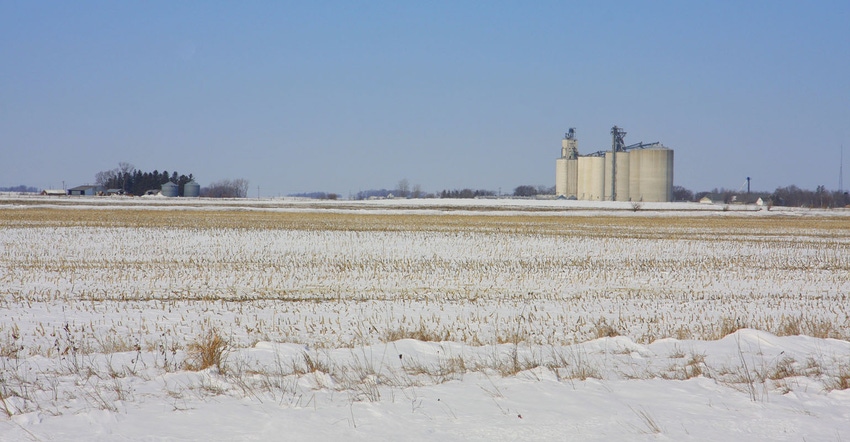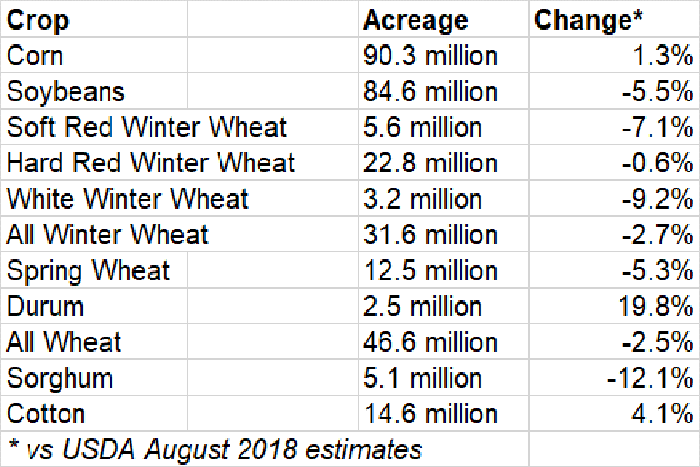Trade and price questions keep planting intentions in play for 2019.

The government shutdown that postponed key January USDA reports has grain markets on hold. But farmers penciling plans for spring planting are moving ahead with choices according to results of Farm Futures latest survey of their intentions for 2019.
Growers said they want to boost corn and cotton acreage, while cutting back on crops affected by China’s import tariffs on soybeans and sorghum. And while USDA previously expected farmers to sow more wheat, uncertain prices and winter wheat planting delays could force a reduction in most classes.
Farm Futures surveyed growers in December and early January, after trade tensions between the U.S. and China eased a little as negotiations resumed to end the dispute. Hopes for an end to tariffs likely convinced some farmers to plant more soybeans than many in the trade expected. The survey reported soybean planting intentions of 84.6 million acres, down 5.5% from 2018, but more than the 82.5 million projected in estimates USDA released in November as a part of its budgeting process. Farm Futures first survey of intentions last summer found acreage of 87.5 million, but that was as the bite of China’s 25% tariff on U.S. imports was just beginning to be felt.
Farm Futures initial report had farmers boosting corn acres to 90.8 million, but the latest estimate came in at 90.3 million. While that would be up 1.3% from 2018 it was below the 92 million USDA projected in in November. The agency doesn’t release its first survey of prospective plantings until March 29, though it will update the statistical guess at its annual outlook conference Feb. 21-22.
New crop soybean futures gained on corn over the fall, with the current ratio of 2.35 giving soybeans only a slight edge.
More acres could be in play this spring due to wet conditions and harvest delays that caused fall applications of fertilizer to be very slow. Those same conditions caused a drop in winter wheat seedings to 31.6 million, down 2.7% and 2 million less than Farm Futures summer survey found. But low wheat prices and good soil moisture on the northern Plains could also convince some farmers to plant corn, soybeans and other crops rather than spring wheat. The latest survey found spring wheat intentions of 12.5 million, down 5.3% from 2018. Only durum seedings could rise, moving to 2.5 million after a significant cutback in 2018.
That could take all-wheat acreage to 46.6 million, down 2.5% from 2018.
Cotton continues to draw attention from farmers in the South, following a good rally last summer. Acreage could be up 4.1% this spring to 14.6 million thanks to better prices and soil moisture across the growing region.
Farm Futures summer survey found growers pivoting back to sorghum, a feed grain found mainly on the southwest Plains. But the trade dispute dashed hopes of Chinese imports. The latest survey found farmers planning to cut “milo” seedings 12.1% to 5.1 million.
Farm Futures surveyed 626 farmers from Dec. 7 to Jan. 3. Growers were invited by email to fill out an online questionnaire. The survey was released on the first day of the Farm Futures Business Summit in Coralville, Iowa.

About the Author(s)
You May Also Like


.png?width=300&auto=webp&quality=80&disable=upscale)


